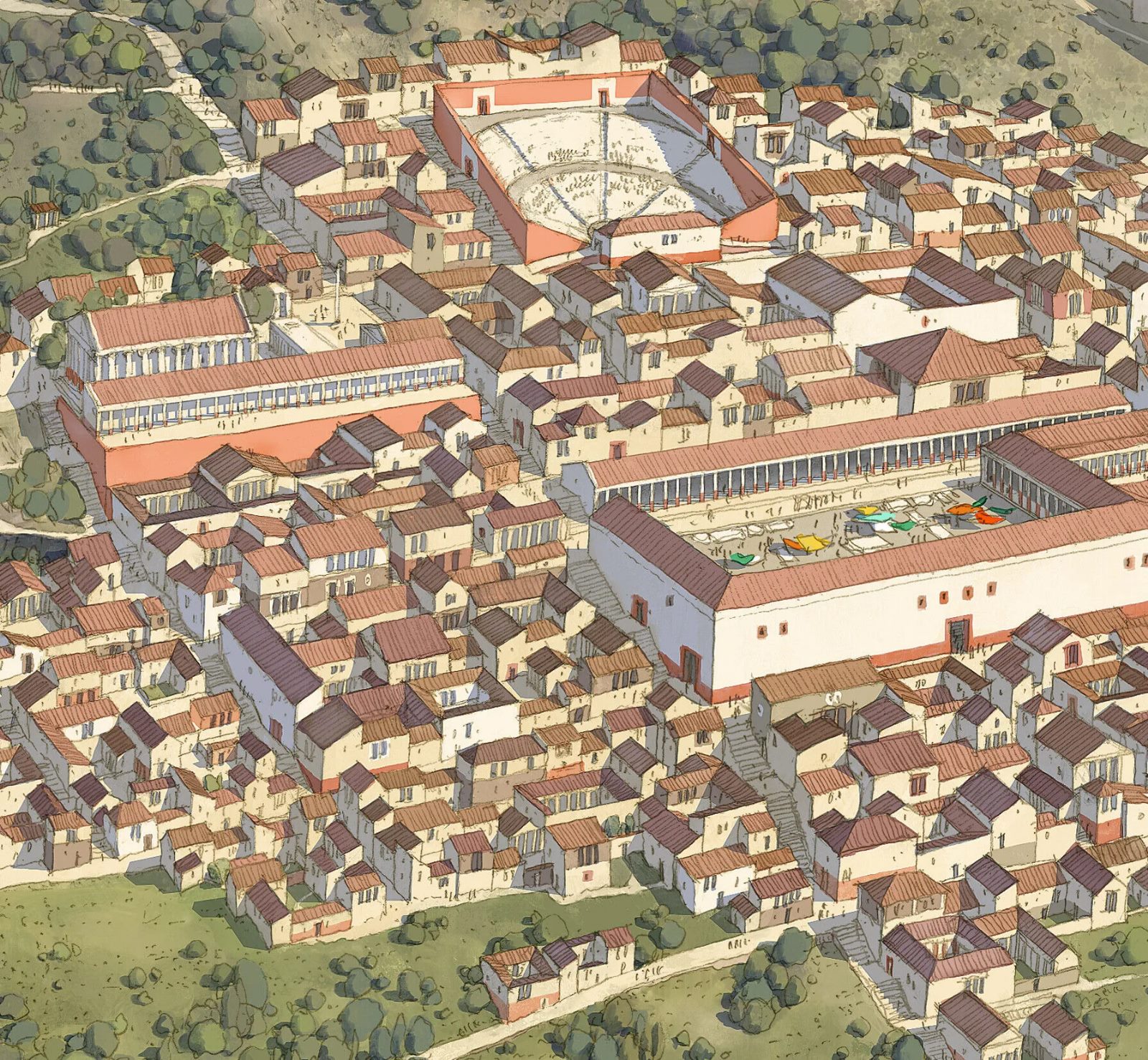Surrounded by the deep blue waters of the Aegean, rising on the southern slopes of Samsun Mountain, 15 km southwest of Söke district, the Ancient City of Priene looks like a treasure lost in the depths of history.
Its first traces date back to B.C. This ancient city, discovered in the mid-7th century, attracts attention with its extraordinary location. Being built on a 370-meter high rock offered a strategic advantage against attacks.
At the same time, being at a high point makes the city visible with its eye-catching structures spread in different directions.
Priene went down in history as a member of the Ionian League and has maintained its importance until today.

What Priene may have looked like
Important Structures:
There are many impressive structures waiting for visitors in the Ancient City of Priene. The most important of these are:
– Temple of Demeter: Dedicated to Demeter, the goddess of fertility, this temple is one of the most important religious buildings of the city.
– Temple of Athena: There was a gold and ivory statue of Athena in front of this temple, which was located at the most dominant point of the city.
– Theater: B.C. This theater, built in 350, is quite large with a capacity of 5000 people.
– Agora: Agora, which is the commercial and social center of the city, still has a very impressive atmosphere today.
– Temple of Zeus: Dedicated to the sky god Zeus, this temple is one of the most magnificent buildings in the city.
– Bouleuterion: This building, where the city council meets, is the center of Priene’s political life.
– Upper and Lower Gymnasium: These structures, used for education and sports purposes, reflect an important part of ancient Greek life.
– Egyptian Temple: This temple, dedicated to the Egyptian gods, is an indication of the polytheistic religion in Priene.
– House of Alexander the Great: This house, where Alexander the Great is believed to have stayed when he visited Priene, has historical importance.
– Byzantine Church: Built with the spread of Christianity, this church bears the traces of different beliefs in Priene.
– Necropolis: This area where city residents are buried provides information about the ancient Greek death culture.
– Residential Areas: Residential areas in Priene, where people from different social statuses live, are also open to visitors.
Admire the Old City Planning
The Ancient City of Priene came under the domination of various kingdoms over time. In 133 BC, King of Pergamum oversaw it. After the death of Attalus, it was transferred to Rome and remained under Roman rule for a long time. The planning of the city was made using what Hippodamus of Miletus, one of the most famous architects of the period, called the “grid system”.
UNESCO bid
The city was first listed on the UNESCO World Heritage temporary list in 2018, but joint efforts by Söke Municipality and the Ministry of Culture and Tourism to gain permanent listing are now being actively worked on.
How to get to the Ancient City of Priene
It lies about 30 to 45 minutes from Didim. To get there, go to Akkoy, and the road signs will take you. The village of Gullubahce, where the ancient site is scattered around, has shady tea houses, simple restaurants and few pensions to chill out.
